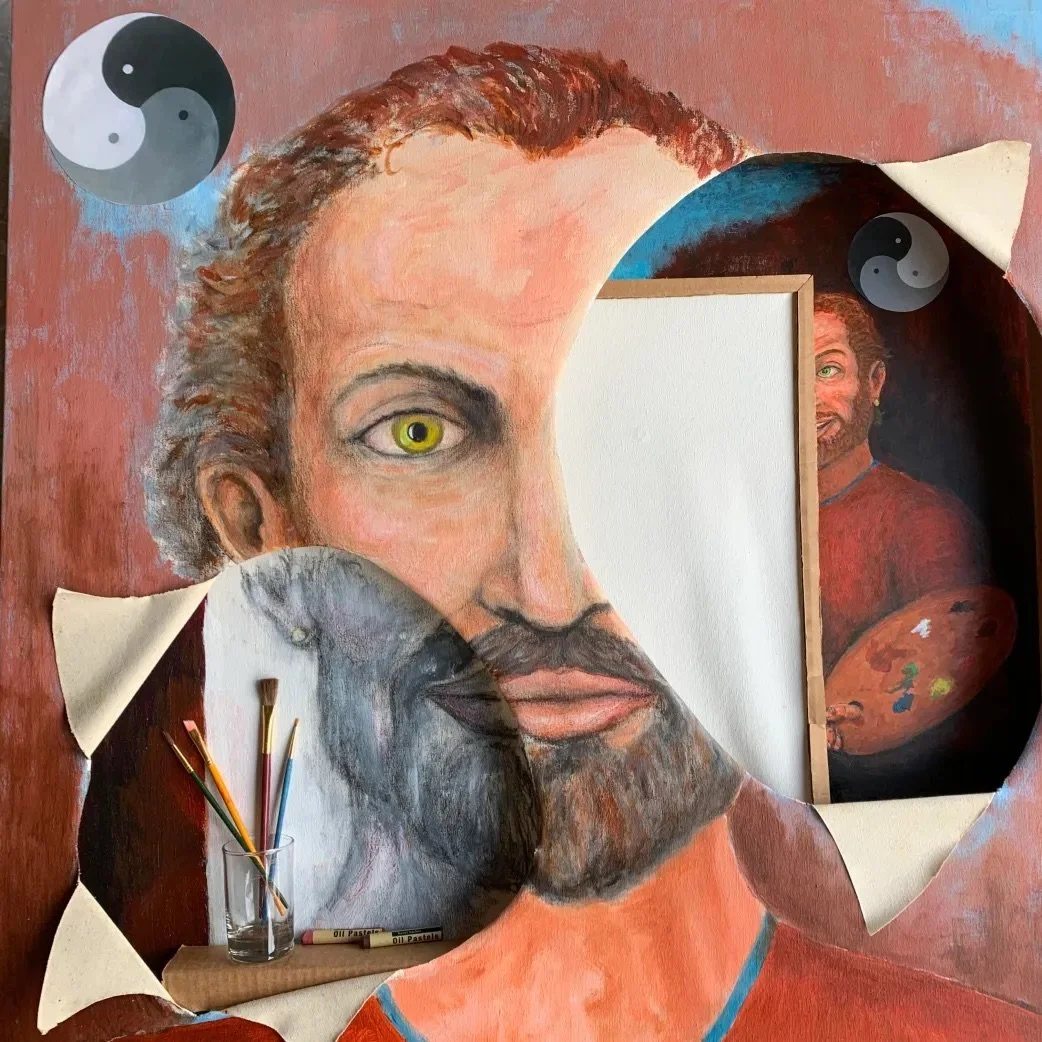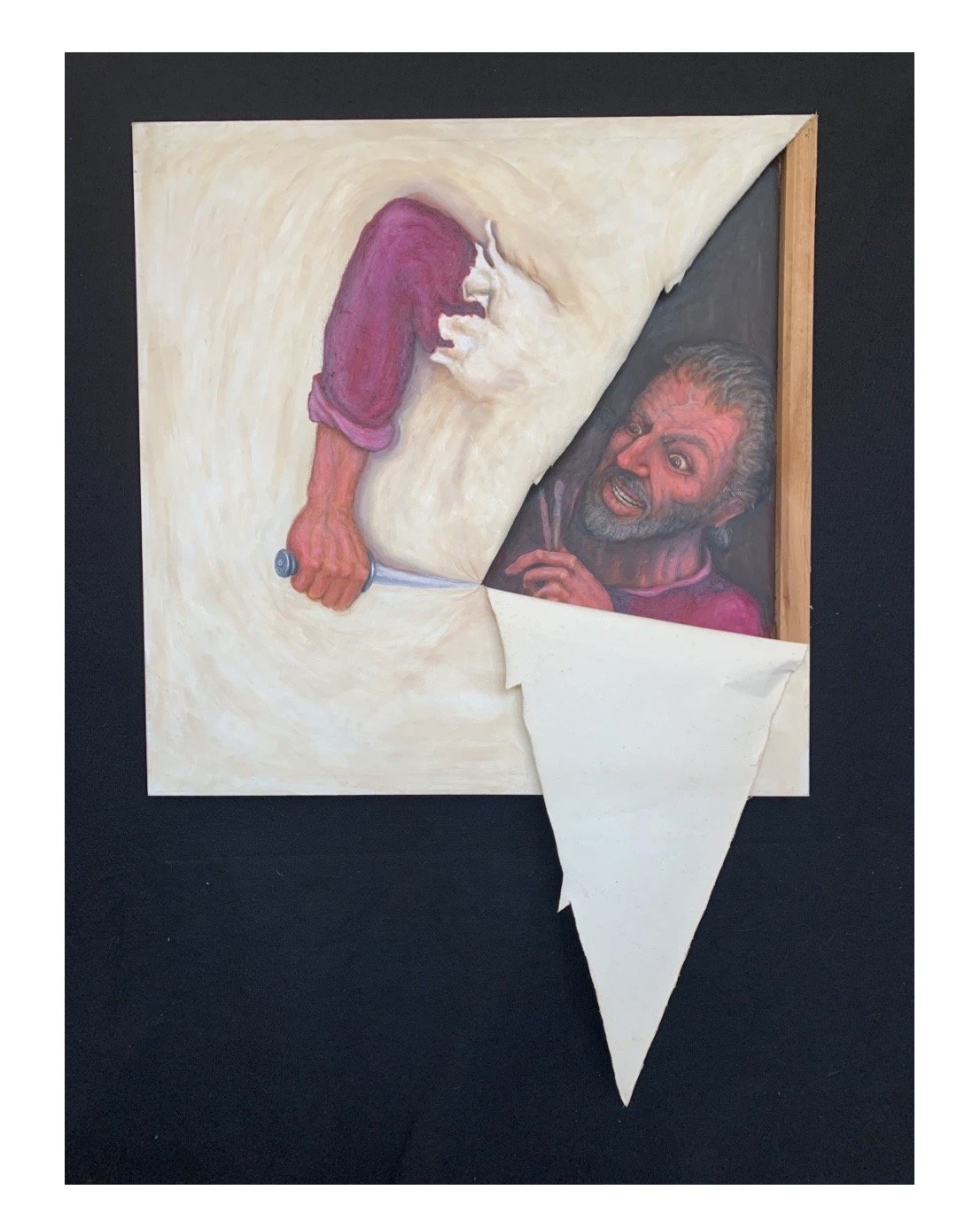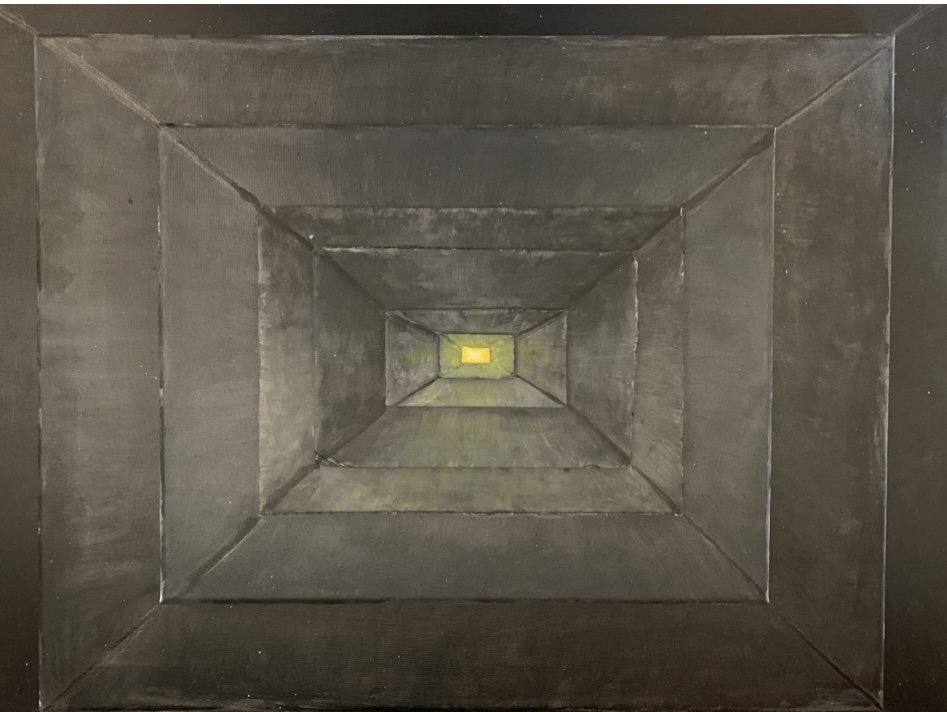Interview with Celik Kayalar
Celik was born in 1949. He was a Fulbright Scholar at UCLA, receiving his Ph.D in Biochemistry in 1977. He has been a Research Associate and Faculty at various Universities such as MIT, UC Berkeley, and UCLA in chemistry, biochemistry, and molecular biology. His Ph.D thesis is credited for earning his mentor, Prof. Paul Boyer, the Nobel Prize in Chemistry in 1997.
Can you delve into the conceptual and artistic journey that led to the creation of Layerism in 1989? Specifically, how did your early artistic experiences and perhaps your scientific mindset contribute to developing this unique style of painting that involves layering multiple canvases with surfaces cut out and torn to reveal layers beneath?
I always questioned the limitation of painting on a single layer of canvas. Realized that multi-layers gave extra means of expression such as depth, (in space & time); peace & violence; memories (repressed or otherwise)… I wanted to make sure that “it had not been done before”, and to my surprise it had not. As later confirmed by the late Prof. Peter
Selz (the most prominent Modern Art Historian of his era), to my delight.
ASCENT (1989) Acrylic on 4 Layers of Canvas From Frog to Ape to Human to God perhaps?
What were some of the primary influences or inspirations that shaped the development of Layerism? How has your artistic vision for Layerism evolved over the years, and what major milestones or breakthroughs have you experienced in this journey?
I’m also an award-winning filmmaker, I write, direct, edit and act. Also teach at my film acting school (Film Acting Bay Area: FABA). It has been selected as the best film acting school in all of California by the LUXlife Organization.
In Film we can obviously move images in space and time. In paintings, with much more difficulty. So, we tell the story in a single image (on the single surface of one canvas). It’s always a challenge.
APOCALYPSE (1990) Acrylic on 3 Layers of Canvas. War, destruction, violence. All throughout human history.
Layerism involves intricate techniques of layering, cutting, and tearing canvases to reveal underlying layers. Can you describe your creative process in detail? How do you decide on the composition, the number of layers, and the specific areas to cut or tear in each piece?
I have a general idea at the beginning: how many layers; is it just cutting or tearing or both? Then I start the process and let it take me to places. Unhindered.
ABYSS (1989), Acrylic on 5 Layers of Canvas. Physical depth in the human mind as reflected by the rose.
What are some of the most significant challenges you have encountered in perfecting the Layerism technique? Can you share specific examples of how you overcame these challenges, both technically and conceptually, to achieve the desired artistic effect?
Did not really encountered any technical challenges, except in gluing back (literally) the pieces of the cut canvas. Had lots of fun doing all that with a scissor in one hand and a brush on the other. A small bottle of glue next to me.
This painting was complicated, therefore quite challenging but fun. Took over a year to finish:
LAYERS of the FREUDIAN MIND (2020). Mixed-Media on 3 canvases
The late Prof. Peter Selz was an esteemed Modern Art Historian who admired and promoted Layerism until his passing. Can you describe the nature of your relationship with Prof. Selz, how his support and critique shaped your work, and what impact his endorsement had on the acceptance and evolution of Layerism in the modern art world?
It’s Professor Peter Selz.
I’ve know him since 1986, he was retired from UC Berkeley (Art History Dept) and I was an assistant prof in the Chemistry Department. He lived close by, and I remember being to his house to film an interview between him and an up-and-coming Turkish painter, Bedri Baykam.
Peter and I enjoyed getting together over drinks and talking about art. I hadn’t mentioned him that I painted quite a bit too. He knew so much about art, mainly modern paintings, I was content just to be in his presence (my he rest in peace).
Once he found out about “Layerism” (I believe Bedri told him), he was intrigued and wanted to see the actual canvases, not just their photos.
He liked my “Conventional” paintings too, but he thought “Layerist” ones were unique and pioneering.
EMERGENCE (2020). Acrylic on 2 canvases
How has Layerism been received by the art community and the general public since its inception? Have there been any particularly memorable exhibitions, reviews, or public reactions that stand out to you and significantly impacted the trajectory of Layerism?
It has been well received and I have heard privately from many painters. Especially after Prof.Peter Selz started championing it in the 13 min video
“Prof. Peter Selz on CELIK KAYALAR's Invention of LAYERISM”
https://www.youtube.com/watch?v=2bciDvN33IE
However, I haven’t had any exhibitions in an Art Gallery so I really don’t know (although obviously I’d like to have some, even it would be on their website, etc).
Your background in biochemistry and filmmaking is unique for an artist. How do you perceive the intersection between these disciplines and your artistic practice, particularly in the development of Layerism? Are there specific scientific principles or cinematic techniques that you find particularly analogous or inspiring in your Layerism work?
Not that I can think of. If there were any, it must have been through my subconscious. And, I’m happy to let others to discover these connections and hopefully tell all of us.
Have you engaged in any educational or collaborative projects to promote and teach Layerism? What has been the response from students and fellow artists, and how do you envision the future of Layerism being taught and developed by new generations of artists?
No I haven’t in any formal way. I’m always open to it, and would welcome invitations from schools, galleries…to come and talk.
If the new generation of artists start using Layerism in their paintings, as the late Prof.Selz have been suggesting, then the technique may naturally spread further. I’ll welcome this, of course.
As the inventor of Layerism, you have undoubtedly seen its evolution over the past decades. What future directions do you foresee for this art style? Are there new techniques, themes, or collaborations you are exploring that will expand the boundaries of Layerism? Can you share details about any upcoming projects or exhibitions that will highlight these new developments?
I’m planning to incorporate my Layerist-Paintings into my new films. As they often play at Film Festivals, I’m hoping that my Layerist-Paintings will get more exposure. Some of this has already happened.
As to the paintings themselves, I’m incorporating more and more objects in between the layers of the canvases, making the paintings Mix-Media.
Incorporation of a small light source (literally an electrical bulb) create fascinating effects.
Here are 3 examples:
INLIGHTENMENT: A Self-Portrait (2020). Acrylic on 3 canvases. With the inner Light (an electric bulb “on” ). Makes the image painted on the painter’s side visible. A surprising effect I discovered.
With Layerism being a significant part of your artistic legacy, what impact do you hope it will have on the art world and future generations of artists? How do you envision Layerism influencing contemporary art practices and the broader understanding of layered, multidimensional art? What advice would you give to young artists interested in exploring and contributing to this unique style?
I do not know the long term impact of Layerism. I’m hearing that more and more painters are practicing it, especially since late Prof. Peter Selz publicized it in
“Prof. Peter Selz on CELIK KAYALAR's Invention of LAYERISM”
https://www.youtube.com/watch?v=2bciDvN33IE
Advice to the Artist:
Try it, you may like it. I’m sure you will take it further than I did and/or anticipated.
Good luck. I’ll be looking forward to your success with it.
Website: www.celik-kayalar.com














